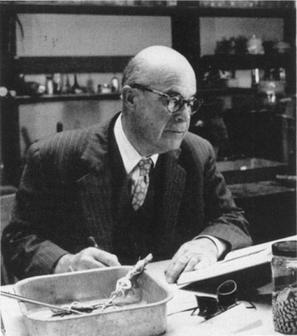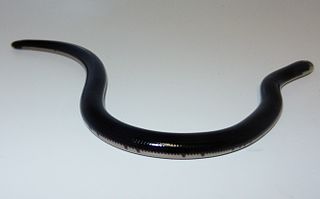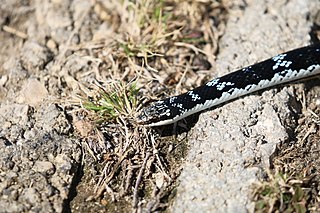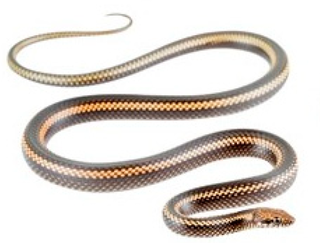
Franz Steindachner was an Austrian zoologist, ichthyologist, and herpetologist. He published over 200 papers on fishes and over 50 papers on reptiles and amphibians. Steindachner described hundreds of new species of fish and dozens of new amphibians and reptiles. At least seven species of reptile have been named after him.

Xenodontinae is a subfamily of snakes in the family Colubridae.

Colubroidea is a superfamily of snakes in the clade Colubroides that includes Colubridae, with some studies splitting Colubridae into multiple families that make up Colubroidea. Historically, Colubroidea also included other caenophidian snakes such as cobras and vipers, as these snakes form a clade. However these groups are now divided into several distinct, but related, families. Zaher et al. (2009) proposed to redefine Colubroidea for colubrids and related families, while designating Colubroides as the group containing vipers and cobras as well as colubroids. The ReptileDatabase considers Colubroidea to be composed of Colubridae and the members of its sister group, Elapoidea, and does not recognize the division of Colubridae into multiple families.

Dipsadinae is a large subfamily of colubroid snakes, sometimes referred to as a family (Dipsadidae). They are found in most of the Americas, including the West Indies, and are most diverse in South America. There are more than 700 species.

Joseph Richard Slevin was an American herpetologist and the second curator of herpetology at the California Academy of Sciences, with which he was affiliated for over 50 years. He collected reptile and amphibian specimens from around the world, notably in the Galápagos Islands in a 17-month expedition, and was largely responsible for re-growing the academy's herpetological collection following its destruction in the 1906 San Francisco earthquake. He wrote or co-wrote nearly 60 scientific papers, and is commemorated in the scientific names of over a dozen species or subspecies of animals and plants.

The Galápagos racer is a colubrid snake in the genus Pseudalsophis that is endemic to the Galápagos Islands. It is a mildly venomous constrictor but it is not considered aggressive or harmful to humans. The two subspecies are the eastern and western racers, the latter being larger, longer, and darker than the former. The western subspecies specializes in hunting fish, while both subspecies eat small reptiles, eggs, rodents, and bird hatchlings. The Galapagos racer is near threatened due to recently introduced species that feed on snake eggs, including pigs, rats, mice, and cats. It is one of only three species of snakes on the Galápagos Islands, and it was first described in 1860. In November 2016, a video clip from the BBC series Planet Earth II showing a group of Galápagos racers hunting marine iguana hatchlings became a viral trend.
Mussurana is a genus of snakes in the family Colubridae. The genus is endemic to South America.
Gelanesaurus is a genus of lizards in the family Gymnophthalmidae. The genus contains two species, which are native to Colombia and Ecuador. Both species were included in the genus Potamites until 2016 when they were moved to the genus Gelanesaurus.
Gelanesaurus flavogularis is a species of lizard in the family Gymnophthalmidae. The species is endemic to Ecuador.

Amerotyphlops is a genus of snakes in the family Typhlopidae.

Caraiba is a monotypic genus of snakes in the family Colubridae. The genus contains the sole species Caraiba andreae, also known commonly as the black and white racer or the Cuban lesser racer, which is endemic to Cuba. There are six recognized subspecies.
Rodriguesophis is a genus of snakes in the family Colubridae. The genus contains three species, all of which are endemic to Brazil.

The Colubroides are a clade in the suborder Serpentes (snakes). It contains over 85% of all the extant species of snakes. The largest family is Colubridae, but it also includes at least six other families, at least four of which were once classified as "Colubridae" before molecular phylogenetics helped in understanding their relationships. It has been found to be monophyletic.
Pseudalsophis thomasi, or Thomas' racer, a species of snake in the family Colubridae. It is endemic to several islands in the Galápagos group.
Erythrolamprus albertguentheri, also known commonly as Günther's green liophis, is a species of snake in the subfamily Dipsadinae of the family Colubridae. The species is native to central South America.
Erythrolamprus festae, also known commonly as the drab ground snake, is a species of snake in the family Colubridae. The species is native to northwestern South America.
Pseudalsophis darwini, otherwise known as Darwin's racer, is a species of snake of the family Colubridae.

Pseudalsophis hephaestus, otherwise known as the Santiago racer, is a species of snake of the family Colubridae.

Pseudalsophis steindachneri , the Striped Galapagos snake, is a species of snake of the family Colubridae. It is named after Franz Steindachner, an Austrian zoologist, ichthyologist, and herpetologist who published over 200 papers on fishes and over 50 papers on reptiles and amphibian species.











